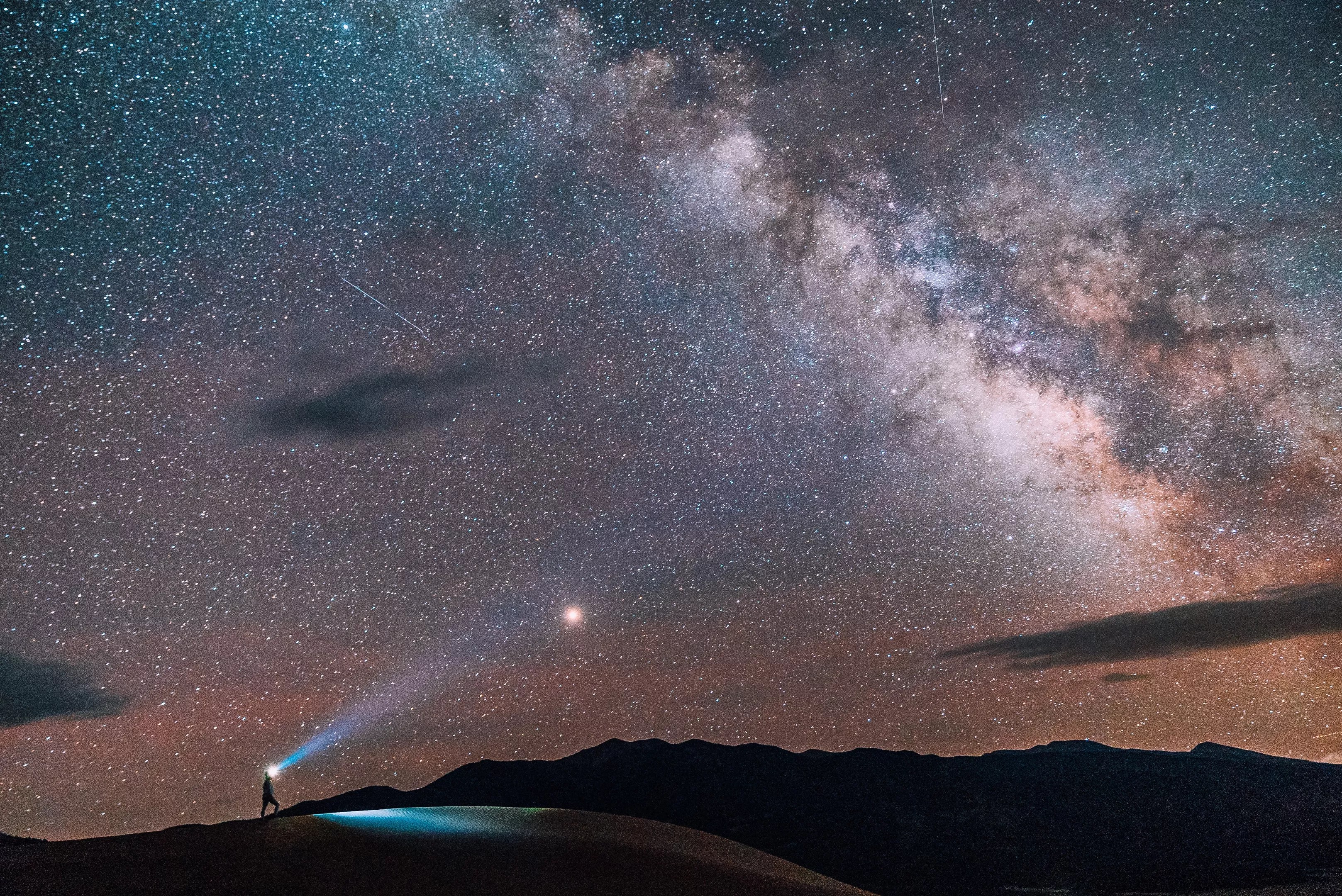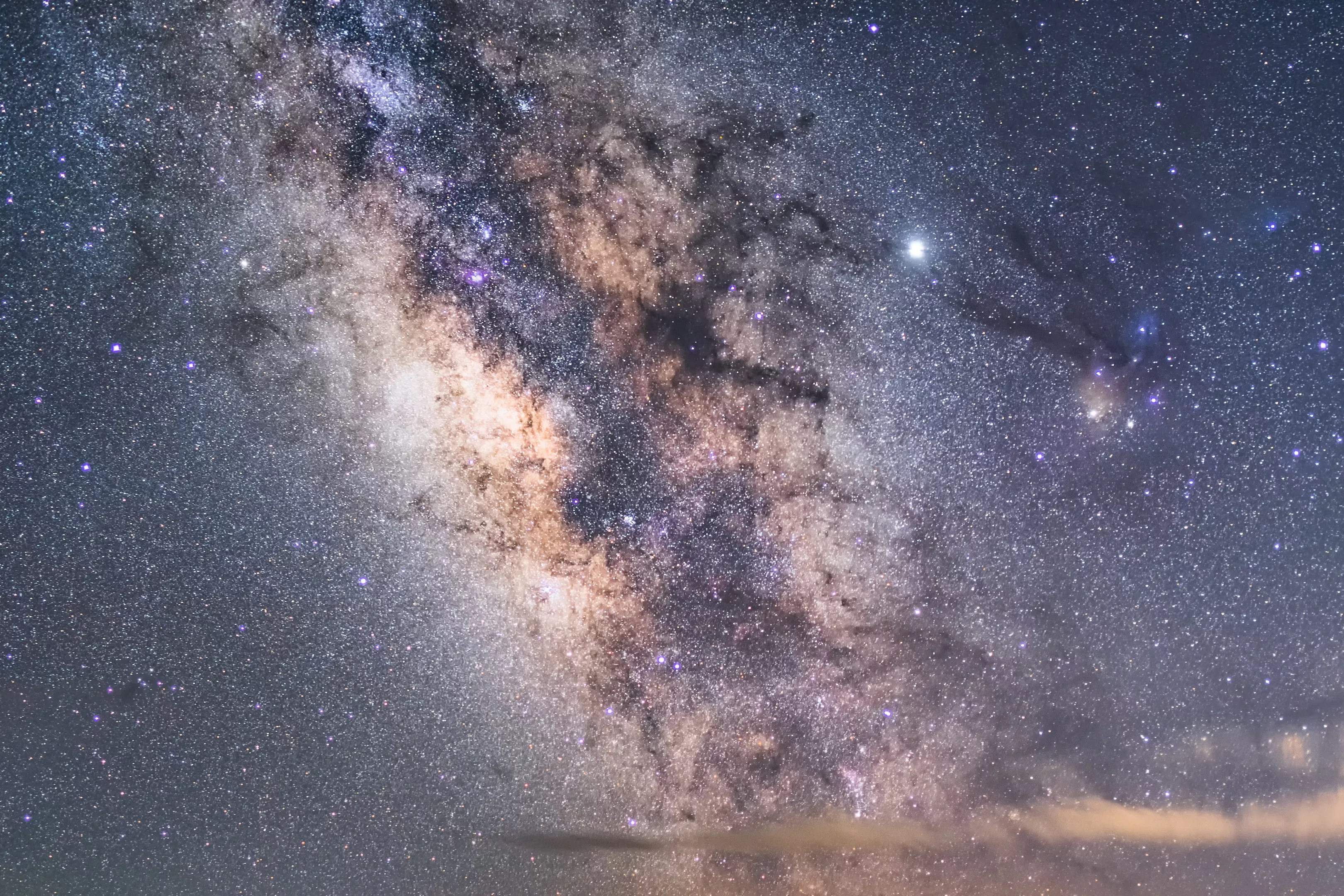
Josh Gordon / Unsplash

Audio By Carbonatix
Colorado’s population may be increasing, but there are still plenty of places where you can escape the city and see the stars….including official Dark Sky destinations.
For the third time last summer, Governor Jared Polis signed a proclamation designating June as “Dark Sky Month” in Colorado, and in Westcliffe – Colorado’s first International Dark Sky Community – he also signed House Bill 22-1382, which allocates grant funds to communities seeking the same title and protection.
The distinction is awarded by the International Dark-Sky Association (IDA), an Arizona-based nonprofit founded in 1988 by astronomers David Crawford and Tim Hunter. International Dark Sky locations are recognized for their exceptional nighttime environments, and must meet preservation standards related to light pollution and education.
Visit all fourteen communities and parks in Colorado that qualify for stellar scenery:
Great Sand Dunes National Park
Mosca
One of Colorado’s weird and wonderful attractions, Great Sand Dunes National Park is absolutely mesmerizing at night. High elevation and low population density in the San Luis Valley allow for optimal stargazing, especially on new-moon nights. When hiking up the cool, sandy dunes, keep an eye out for nocturnal wildlife such as kangaroo rats, coyotes and owls.
Crestone
Just north of Great Sand Dunes National Park lies Crestone, a small mountain town on the Sangre de Cristo mountains’ western slope. Designated a Dark Sky Community, Crestone also associates with the Rights of Nature legal doctrine. Residents are known for their spiritual diversity and great love for their outdoor environment. See the town’s helpful map to find the best dark sky viewing sites.
Westcliffe and Silver Cliff
In 2015, Westcliffe and Silver Cliff were named Colorado’s first Dark Sky Communities, and they’re located just an hour west of Pueblo. But situated between the parallel Sangre de Cristo and Wet Mountain ranges, nighttime views are protected from the glow of nearby metropolitan areas. Sitting at 8,000 feet in elevation, you can witness the stars from the state-of-the-art Smokey Jack Observatory or seek solitude at Bluff Park.
Florissant Fossil Beds National Monument
Florissant
Similar to Westcliffe and Silver Cliff, Florissant Fossil Beds National Monument isn’t at all far from a major city. But despite Colorado Springs being less than an hour away, Pikes Peak and the Front Range shield the area from light pollution, allowing for prime stargazing opportunities. Each month, volunteer astronomers put on Night Sky Programs, educating visitors and allowing them to peer into telescopes. The next event is scheduled for Friday, July 15.
Jackson Lake State Park
Orchard
Jackson Lake State Park is Colorado’s only Dark Sky Park on the eastern plains, and happens to be the closest Dark Sky area to Denver. Sit on the sandy beach and see the Milky Way reflected on Jackson Lake, or spot planets and galaxies through the park’s impressive Celestron telescope. The park’s campgrounds are another great viewing area and offer some of the best campsites near Denver.
Dinosaur National Monument
Dinosaur
On the far west side of Colorado lies Dinosaur National Monument, one of the darkest places in the United States. Its remote location and high elevation on the Colorado Plateau create perfect stargazing conditions. You may even see the International Space Station among thousands of twinkling stars! Mitten Park offers optimal viewing grounds, and Night Sky Programs are held near the Split Mountain Campground.

Incredible night views in Gunnison, Colorado.
Vincent Ledvina
Curecanti National Recreation Area
Gunnison
The first-ever National Recreation Area to be designated a Dark Sky Park, Curecanti wows stargazers, especially on a clear, still night. With the right conditions, you may see the dazzling display reflected on the park’s three large reservoirs. Visit the Gunnison Valley Observatory for a ranger-led astronomy program and up-close looks through the observatory’s thirty-foot telescope.
Black Canyon of the Gunnison National Park
Gunnison
A celebrated Dark Sky Park since 2015, Black Canyon of the Gunnison National Park is one of Colorado’s most famous stargazing locations. Composed of astronomers and astro-photographers, the Black Canyon Astronomical Society hosts educational programs, including the annual Black Canyon Astronomy Festival. Whether viewing through a telescope or with the naked eye, the estimated 5,000 visible stars in the area will absolutely amaze.
Ridgway
An hour south of Black Canyon lies Ridgway, a remote Dark Sky Community found along the San Juan mountains’ foothills. By initiating its Outdoor Lighting Ordinance and educating the town’s 1,000 residents, Ridgway gained its proud distinction as a stargazer’s paradise. For the best views, locals recommend Athletic Park and Top of the Pines Recreation Area.
Norwood
Located 45 minutes west of Telluride, Norwood rests at 7,000 feet of elevation atop Wright’s Mesa. With its high perch and extremely low humidity, the high desert town is a premier stargazing location, where planets and meteors are also often visible. According to locals, Miramonte Reservoir and the nearby Busted Arm Draw campground are prime places to marvel at the night’s skies.
Nucla and Naturita
Less than thirty minutes farther west of Norwood lie two more Dark Sky Communities, Naturita and Nucla. The two small towns are less than five miles apart, and together, the residents work to protect their precious resource. In 2020, they established the West End Dark Sky Alliance, which hosts community and educational events, including star parties and telescope workshops.
Mesa Verde National Park
Mesa Verde
Preservation is Mesa Verde National Park’s key objective, protecting not only its famed cliff dwellings, but the night sky, as well; it was named the 100th Dark Sky Park. The region’s stars can be seen well from many areas, including the Morefield Campground and Amphitheater, where ranger-led evening programs are held. The park’s overlooks are also accessible after dark, allowing visitors to drive to various scenic viewpoints.
Hovenweep National Monument
Cortez
Spanning from southwestern Colorado into Utah, this Four Corners-area national monument was designated a Dark Sky Park early on in 2014. Found in an isolated region surrounded by Bureau of Land Management land and the Navajo Nation, Hovenweep translates to “deserted valley.” The accurate description prompted the IDA to name Hovenweep a part of the Gold Tier, the darkest of the three tiers used to define Dark Sky locations.
Slumgullion Center
Lake City
Many of the destinations on this list may be foreign, even to Colorado locals. But none are as secluded as Slumgullion Center in Hinsdale County, which claims to be “the most remote area in the lower 48 states.” The 58-acre Lake City property is currently undeveloped, with no lighting, and any future development will be done with conservancy top of mind. “We want to do everything possible to preserve this unique setting for our children, grandchildren, and for all future generations,” says astronomer Phillip Virden, who assisted with the Dark Sky application.